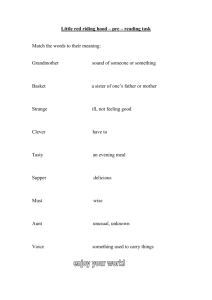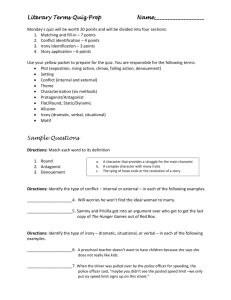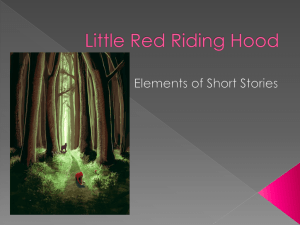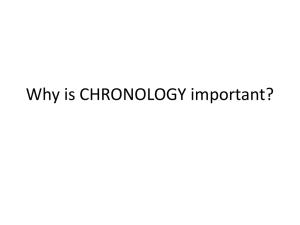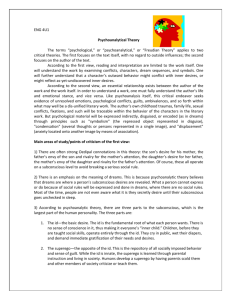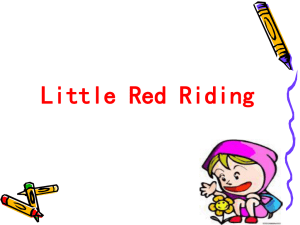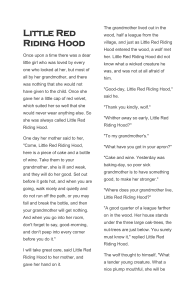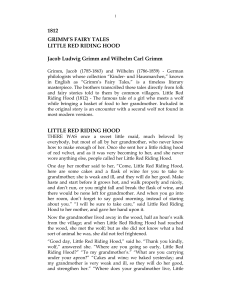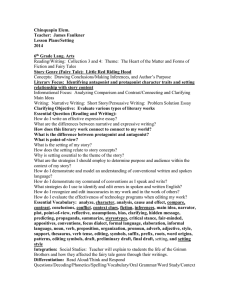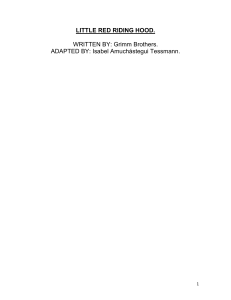Script analysis from the perspective of the designer is the... process. Particularly as our students may have had little or...
advertisement
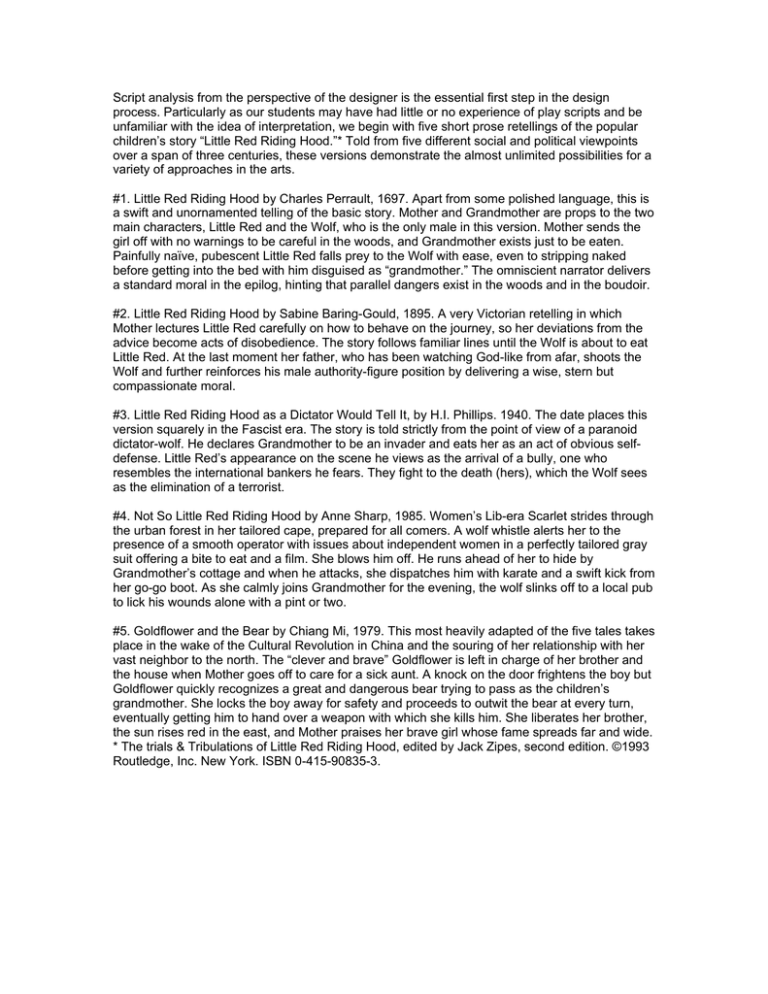
Script analysis from the perspective of the designer is the essential first step in the design process. Particularly as our students may have had little or no experience of play scripts and be unfamiliar with the idea of interpretation, we begin with five short prose retellings of the popular children’s story “Little Red Riding Hood.”* Told from five different social and political viewpoints over a span of three centuries, these versions demonstrate the almost unlimited possibilities for a variety of approaches in the arts. #1. Little Red Riding Hood by Charles Perrault, 1697. Apart from some polished language, this is a swift and unornamented telling of the basic story. Mother and Grandmother are props to the two main characters, Little Red and the Wolf, who is the only male in this version. Mother sends the girl off with no warnings to be careful in the woods, and Grandmother exists just to be eaten. Painfully naïve, pubescent Little Red falls prey to the Wolf with ease, even to stripping naked before getting into the bed with him disguised as “grandmother.” The omniscient narrator delivers a standard moral in the epilog, hinting that parallel dangers exist in the woods and in the boudoir. #2. Little Red Riding Hood by Sabine Baring-Gould, 1895. A very Victorian retelling in which Mother lectures Little Red carefully on how to behave on the journey, so her deviations from the advice become acts of disobedience. The story follows familiar lines until the Wolf is about to eat Little Red. At the last moment her father, who has been watching God-like from afar, shoots the Wolf and further reinforces his male authority-figure position by delivering a wise, stern but compassionate moral. #3. Little Red Riding Hood as a Dictator Would Tell It, by H.I. Phillips. 1940. The date places this version squarely in the Fascist era. The story is told strictly from the point of view of a paranoid dictator-wolf. He declares Grandmother to be an invader and eats her as an act of obvious selfdefense. Little Red’s appearance on the scene he views as the arrival of a bully, one who resembles the international bankers he fears. They fight to the death (hers), which the Wolf sees as the elimination of a terrorist. #4. Not So Little Red Riding Hood by Anne Sharp, 1985. Women’s Lib-era Scarlet strides through the urban forest in her tailored cape, prepared for all comers. A wolf whistle alerts her to the presence of a smooth operator with issues about independent women in a perfectly tailored gray suit offering a bite to eat and a film. She blows him off. He runs ahead of her to hide by Grandmother’s cottage and when he attacks, she dispatches him with karate and a swift kick from her go-go boot. As she calmly joins Grandmother for the evening, the wolf slinks off to a local pub to lick his wounds alone with a pint or two. #5. Goldflower and the Bear by Chiang Mi, 1979. This most heavily adapted of the five tales takes place in the wake of the Cultural Revolution in China and the souring of her relationship with her vast neighbor to the north. The “clever and brave” Goldflower is left in charge of her brother and the house when Mother goes off to care for a sick aunt. A knock on the door frightens the boy but Goldflower quickly recognizes a great and dangerous bear trying to pass as the children’s grandmother. She locks the boy away for safety and proceeds to outwit the bear at every turn, eventually getting him to hand over a weapon with which she kills him. She liberates her brother, the sun rises red in the east, and Mother praises her brave girl whose fame spreads far and wide. * The trials & Tribulations of Little Red Riding Hood, edited by Jack Zipes, second edition. ©1993 Routledge, Inc. New York. ISBN 0-415-90835-3.
